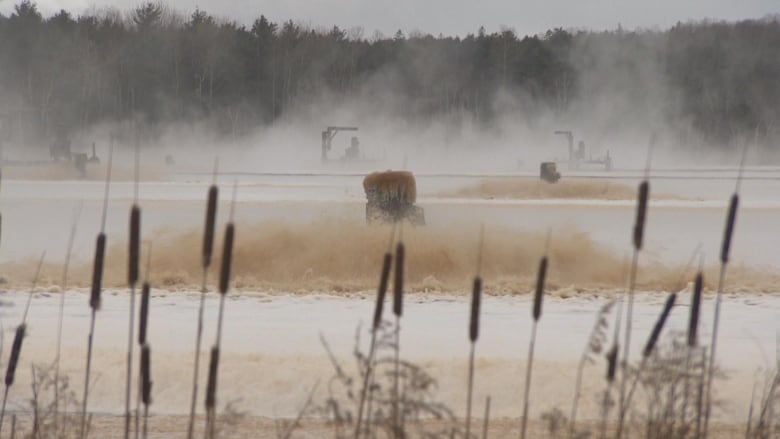Northern Pulp report predicts little impact on fishery, pipeline route mostly the same
Mill says without a new effluent treatment site it can't continue to operate

Should Northern Pulp be granted approval to construct a new effluent treatment facility and pipeline, the company estimates it would need to continue using its current effluent treatment site atBoat Harbour for 21 months until the work is complete.
That's one of the details contained in a 245-page focus report, which comes with 40 supporting documents, the company delivered to the Environment Department this week.
The public has until Nov. 8 at 11:59 p.m. to submit comments on the report. Environment Minister Gordon Wilson will then have until Dec. 17 to deliver a decision on whether to approve the project.
Wilson's predecessor, Margaret Miller, ordered the report last March when she ruled the company's application for approval to begin construction was insufficient.
The terms of reference outlined a host of questions the company had to answer about things such as human and fish health, environmental monitoring and the pipeline route.
Pipe would go below Pictou Harbour
Perhaps the most controversial part of the proposed project, a 15-kilometre pipeline would be used to transfer treated effluent from the mill's Abercrombie Point location to Caribou Harbour, where it would be discharged into the Northumberland Strait.
The report says studies show the treated effluent, which would be consistent with what's leaving Boat Harbour today, would be dispersed using diffusers that create "jet-like turbulence."
Everything would be within national guidelines, says the report.
Compared to the first submission, little is different about the pipeline proposal other than it would cross Pictou Harbour under water as opposed to along the causeway.
Although it would no longer go along the shoulder of Highway 106, it would remain in the Transportation Department's right-of-way. In March, the province's chief engineer said the preference was to have it run parallel to a secondary road and not the Trans-Canada Highway.

In response to the Environment Department's question about the pipeline route, the company's submission refers to a letter from the Transportation Department that notes conversations between the mill and government officials "regarding installation of the pipeline within the right-of-way are ongoing."
That's not what the letter actually says, however.
"This letter confirms that Nova Scotia Department of Transportation and Infrastructure Renewal (TIR) is continuing to hold talks with Northern Pulp regarding a possible pipeline route to the mill's proposed new effluent treatment facility. It is anticipated these talks will continue this fall."
The letter, signed by the department's executive director of maintenance and operations, does not say anything about the location being within the right-of-way.
That there's so little change to the pipeline route is a problem for Jim Ryan, Pictou's mayor. The route still crosses the town's watershed, something Ryan said is unacceptable.
Although Ryan and his council colleagues have made their feelings known to the company throughout the process, the mayor said he's not sure those feelings "were taken seriously enough."
The company's submission outlines steps to prevent leaks and detect problems immediately, but Ryan said he does not want any additional risk brought to the watershed.
No notable impacts expected for fishery
Another source of public concern about the proposed project is what effects it could have on the fishery, most notably lobster.
According to the report, there wouldn't be much of any effect on lobsters, rock crab and other species known to exist around the pipe's proposed outfall,about four kilometres from shore.
The report notes that the final location of where the pipe would enter the marine environment has yet to be settled. It wouldbe buried three metres below the sea floor.
"Based on testing, modelling and the incorporation of mitigation activities, no significant residual impacts to marine water quality are expected to arise on any fisheries or fish habitat as a result of this project," the report says.
"The placement of the pipeline outfall diffuser was chosen so as to minimize the impact in active fishing areas."
Boat Harbour Act looms
The report says the pipeline would traverse the scallop buffer zone, which was created to protect lobster nursery habitat, and would interact with the rock crab resource.
But it says the pipe's diffuser would be outside the buffer zone and "not within an area known to be used for scallop harvesting."
The company says environmental monitoring would happen throughout the construction phase and continue once a new treatment site and the pipeline becomes operational.
Legislation passed in 2015 calls for Boat Harbour to close as the mill's effluent treatment lagoon by Jan. 31, 2020. The mill has said it cannot continue to operate without an extension to that date.
MORE TOP STORIES












_(720p).jpg)


 OFFICIAL HD MUSIC VIDEO.jpg)
.jpg)



























































































